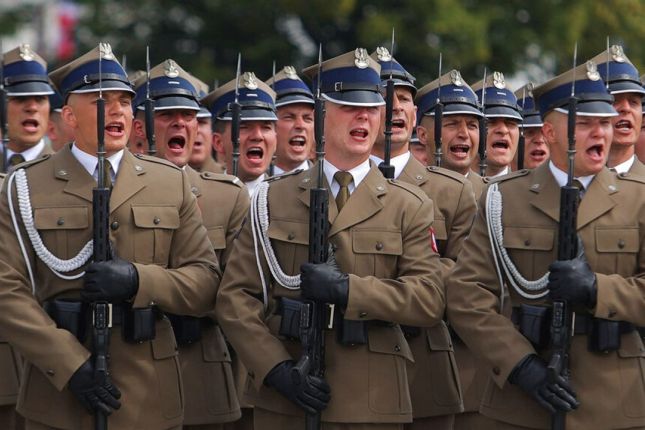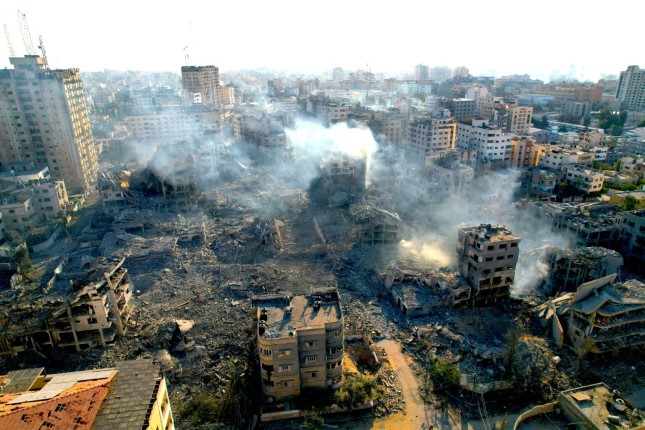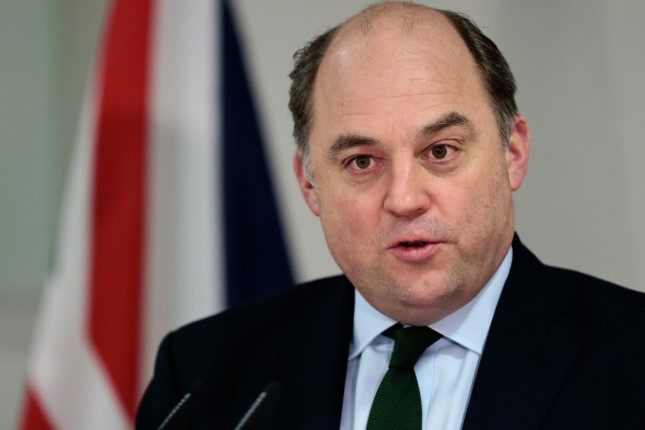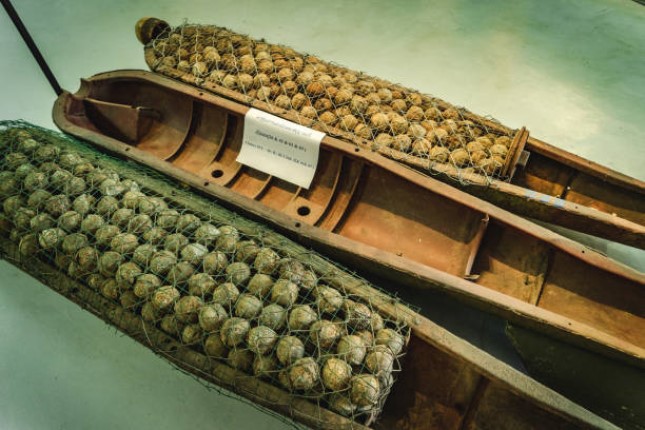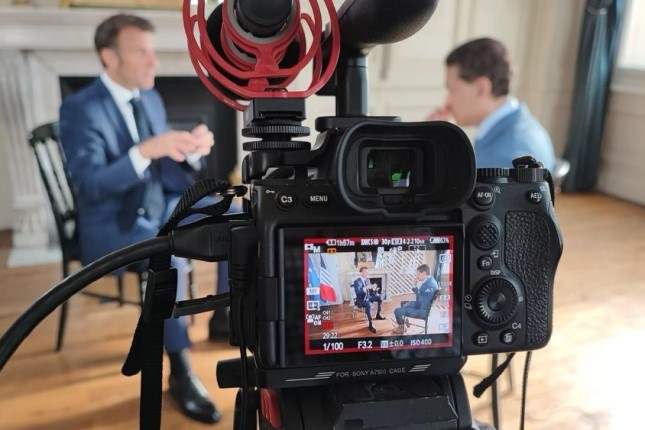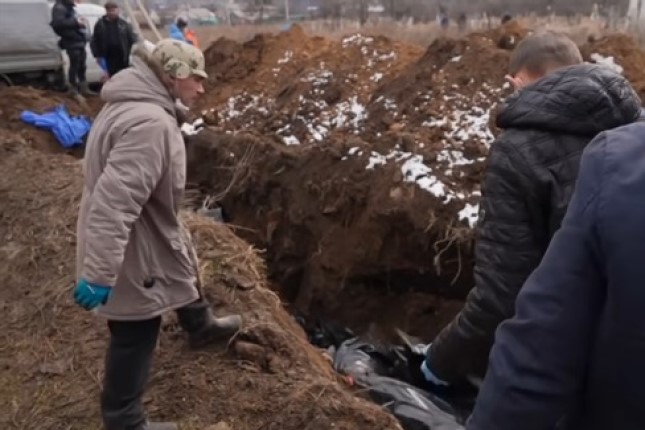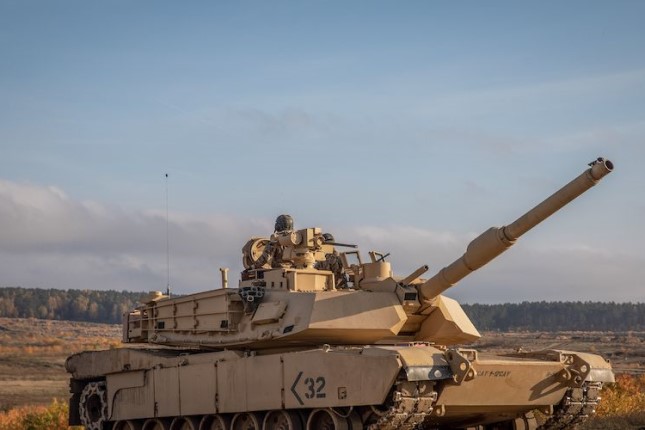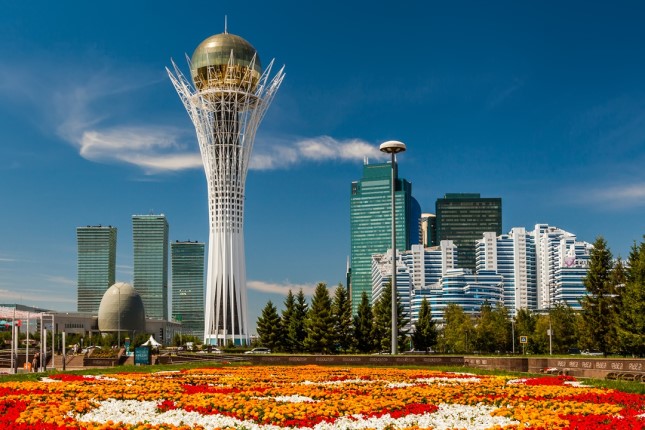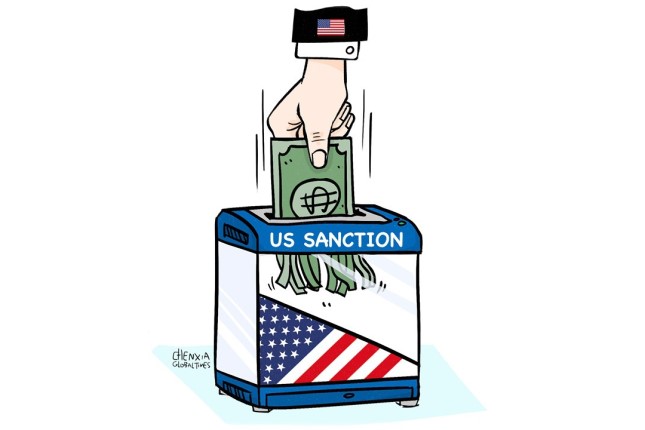The closer the election date, the more the country’s political elites seem to be working themselves up to a reactionary fever pitch. More rearmament, more nationalism, more racism and above all more anti-Russian war hysteria are the central pillars here. Behind this is the fear of the Polish bourgeoisie, regardless of factional disputes, of an eruption of working class opposition. Their solution is war.
Poland plays a central role in NATO’s military build-up against Russia and, according to the will of the governing parties and the opposition, should expand it even further. As the linchpin of NATO’s eastern flank with its "rapid reaction force," which has been increased to 300,000 troops, Poland links the Baltic states and the Baltic Sea region in the north with the Balkans and the Black Sea region in the south and the Western European NATO states.
Since the beginning of the war in Ukraine, Poland has become the most important hub for all military logistics. Whether weapons or foreign visitors—everything lands near the small Polish town of Rszeszow and covers the last 100 kilometres into Ukraine overland.
Poland itself has already delivered weapons and materiel worth over three billion euros to Ukraine, including around 250 tanks. Before the delivery of German tanks, this put it ahead of Germany in third place among arms suppliers. Since the start of the war in February 2022, it has also almost doubled its own military budget, which has risen from 2.3 percent to more than 4 percent of gross domestic product, or about 28 billion euros. Poland has set itself the goal of building the largest land army in Europe, with 300,000 soldiers.
While the representatives of all parties repeat the mantra that this was a necessary reaction to “Russian aggression,” Poland itself played a leading role in provoking the Russian attack on Ukraine.
As early as 2008, the then Prime Minister and today’s opposition leader Donald Tusk had agreed with US President George W. Bush on the installation of a US missile defence shield in Poland, thus deliberately intensifying the confrontation with Russia.
Poland then played a decisive role in the Maidan coup in 2014. Polish Foreign Minister Radosław Sikorski travelled to Kiev together with his German counterpart Frank-Walter Steinmeier and French Foreign Minister Laurent Fabius to force elected President Viktor Yanukovych to resign. Sikorski is a member of Civic Platform (PO)—which Tusk also belongs to—and is married to the American anti-communist historian and journalist Anne Applebaum.
After the start of the civil war in Ukraine, the Polish government shifted the focus of the army from the west to the eastern border. In April 2014, Tusk demanded that NATO move more troops to Poland. Since then, Polish politics has shifted further and further to the right, both under the rule of the PO and the nationalist conservative PiS, which has led the government since the end of 2015.
Social crisis and xenophobia
Although the government and opposition in Warsaw both support the all-dominant pro-war issue, the ruling PiS is apparently afraid that opposition to the war policy and its devastating social consequences will break out elsewhere.
It is working people that must bear the full brunt of the enormous costs of rearmament and war. Since the beginning of the war, inflation has risen rapidly. At one point it was around 18 percent, and food prices even doubled last year in some cases. In the meantime, the official inflation rate has dropped to 11 to 12 percent and that of food to just under 20 percent. According to official OECD figures, the average purchasing power of Polish wage earners has fallen by 7 percent in the past year alone.
The government has tried to dampen the social consequences of inflation with a series of subsidies and tax cuts but has just as quickly withdrawn them as inflation has fallen. The only remaining drop in the ocean is the suspension of VAT (sales tax) on food. Nevertheless, food in Poland is only marginally cheaper than in neighbouring Germany, and with wages that are only half as high. Rents have also exploded recently, reaching Western European levels in big cities like Warsaw and Krakow.
There have already been repeated mass protests against the untenable social and political conditions in Poland in recent years. In September 2021, for example, tens of thousands of doctors, nurses and other health workers fought for higher wages and better working conditions. And in June this year, nearly half a million protested in Warsaw against PiS efforts to establish dictatorial rule.
The PiS government is responding to the social crisis and resistance to it with the tried and tested methods of the extreme right. It is unleashing a nationalist campaign and trying to deflect social tensions onto the weakest in society, refugees, and immigrants. At the same time as the parliamentary elections, it is planning a referendum in which voters will be asked to answer four leading questions that will be used, among other things, to stir up racism and hostility towards refugees.
Part of the PiS government’s demagogy is also directed against the European Union, with which it is in legal disputes on several issues. At the same time, Poland is economically dependent on EU funds and the European market. Opposition leader Tusk was president of the European Council for five years.
One of the referendum questions is: "Do you support the admission of thousands of illegal immigrants from the Middle East and Africa under the forced relocation mechanism imposed by the European bureaucracy?"
In the accompanying election video, PiS mixes voices of opposition politicians with scenes of burning cars, vandalism and a hooded black man with a knife. The head of the government, Mateusz Morawiecki, asks: "Do you want this to happen in Poland? Do you want to stop being the masters of your own country?" The primitive and repulsive imagery evokes associations with the Nazi hate sheet Der Stürmer.
But anyone who thinks that this filth only comes from the PiS is far off the mark. Earlier, opposition leader Tusk had already used riots in France following a police killing as an opportunity to demand on Twitter: "The Polish people must regain control of their country and its borders!" Tusk accused PiS leader Jaroslaw Kaczynski of letting 130,000 migrant workers from India, Nigeria and Pakistan into the country "quickly and easily" last year.
However, it is not only in Poland where asylum policy increasingly bears fascist traits. An anti-refugee campaign is raging all over Europe, costing thousands of refugees their lives.
The second referendum question also has an anti-refugee target. It is: "Do you support the removal of the barrier on the border between the Republic of Poland and the Republic of Belarus?"
This refers to the 5.5-metre-high and 186-km-long border fence, which was completed in 2022, is guarded by video cameras and military-armed patrols, and cost 350 million euros. Poland and the EU accuse Belarus of waging a "hybrid war"—such inhumane language—by allowing refugees to reach the border. The bulwark is part of a total of more than 2,000 kilometres of border fences of "Fortress Europe."
Armament and war plans
The fascist agitation against refugees is complemented by an intensive militarist campaign.
On August 15, the largest military parade since the end of the Stalinist Polish People’s Republic took place on the traditional “Army Day” in Warsaw under the motto “Strong Red and White.” Two thousand soldiers of the Polish army and of NATO allies marched to martial music and in a sea of national flags past the main stage, where President Duda, Prime Minister Morawiecki and Defence Minister Blaszczak inspected the parade.The martial show was complemented by 200 vehicles on the road and around 100 aircraft in the sky.
The Ministry of Defence website proudly lists the latest equipment acquired as part of the massive military upgrade programme. The government finalised defence contracts worth $15 billion last year for 1,300 American Abrams and South Korean K2 tanks alone.
Around 70 so-called "military picnics" were also held across the country, where military equipment was also presented, and local politicians, flanked by representatives of the army and militia, veterans and underage scouts, delivered "patriotic" speeches.
The Scout Association and the WoT national militia signed a cooperation agreement in 2020, and a new subject, “security education,” including shooting training, was introduced in Polish schools from grade 8. This underlines how far the militarisation of the whole of society goes.
Here, too, the opposition follows the same course as the government and sometimes attacks it from the right. For example, the “Law on the Oath of the Fatherland” on military rearmament was passed almost unanimously in both chambers of the Polish parliament.
Here, too, the opposition voiced criticism from the right. One criticism was that the quantitative expansion of the army to 300,000 men was not expedient and that more quality was needed. Another criticism was that defence spending, which had recently increased to 4.0 percent of GDP, should not be financed by debt, but should be accompanied by social cuts.
It is becoming increasingly clear that Poland is not only massively arming itself, but is preparing to be the first NATO power to intervene with its own soldiers in the Ukraine war or to open a new front against Belarus.
For some time now, Poland has deployed 2,000 soldiers as well as 5,000 militarily armed border guards on its border with Belarus to ward off “hybrid attacks.” In June, Poland quintupled the number of its soldiers at the border: 4,000 are to be permanently stationed there as part of the new “Rengaw” task force, the remaining 6,000 are to be held in reserve. The “asylum” offered by Belarus to the Wagner mercenaries and their leader Prigozhin after their failed coup attempt served as a pretext.
Since then, reports of an alleged threat by Wagner mercenaries have been escalating, with claims that, disguised as refugees, they could infiltrate Poland and destabilise the country. In fact, the US Institute for the Study of War (ISW), in a situation report at the end of June, only referred to a new military tent camp for 30 to 50 people near Assipovichy, more than 300 kilometres from the border. More recent ISW reports even refer to a withdrawal of Wagner personnel.
Recently, the alleged violation of airspace by two Belarusian helicopters was turned into a major military provocation by the press on the basis of social media posts.
It is becoming increasingly clear that plans for an intervention by the Polish army are being worked on feverishly. Jaroslaw Kaczynski, the leader of the ruling PiS party, had already called for a NATO "peace mission" to support Ukraine shortly after the war began. In May last year, retired US General Jack Keane raised the issue of an "international coalition" to secure control of the Black Sea against Russia.
In March this year, the Polish ambassador in Paris, Jan Emeryk Rościszewski, openly threatened military intervention in an interview with French TV station LCI. "If Ukraine does not defend its independence, we will have no other choice, we will be forced to enter the conflict." The recent disastrous failure of the Ukrainian summer offensive, admitted in the Washington Post, gives this threat renewed relevance.
The Polish Volunteer Corps (Polski Korpus Ochotniczy - PDK) is already openly fighting in Ukraine alongside the far-right Russian Volunteer Corps. Recently, there have been accusations from Russia that the Lithuanian-Polish-Ukrainian Brigade, founded in 2009, could play a key role in an intervention, as it consists of NATO and non-NATO soldiers.
Thus, the autumn poll will go down in history as a "war election." Whichever discredited right-wing party emerges victorious will not change the development of the war. Only an independent movement of the international working class can stop the war madness.
Photo: Polish troops sing national anthem during the ceremony marking Polish Army Day in Warsaw, Poland, Monday, Aug. 15, 2022. © AP Photo/Michal Dyjuk
Source: Word Socialist Web Site.
Other materials on the future of Poland:
Might Poland Be at Risk of Shooting Itself in the Foot?
Military Contract as a Death Sentence
Whom The Gods Would Destroy…
Poland is Christ of Nations
A Poland-style Suicide
